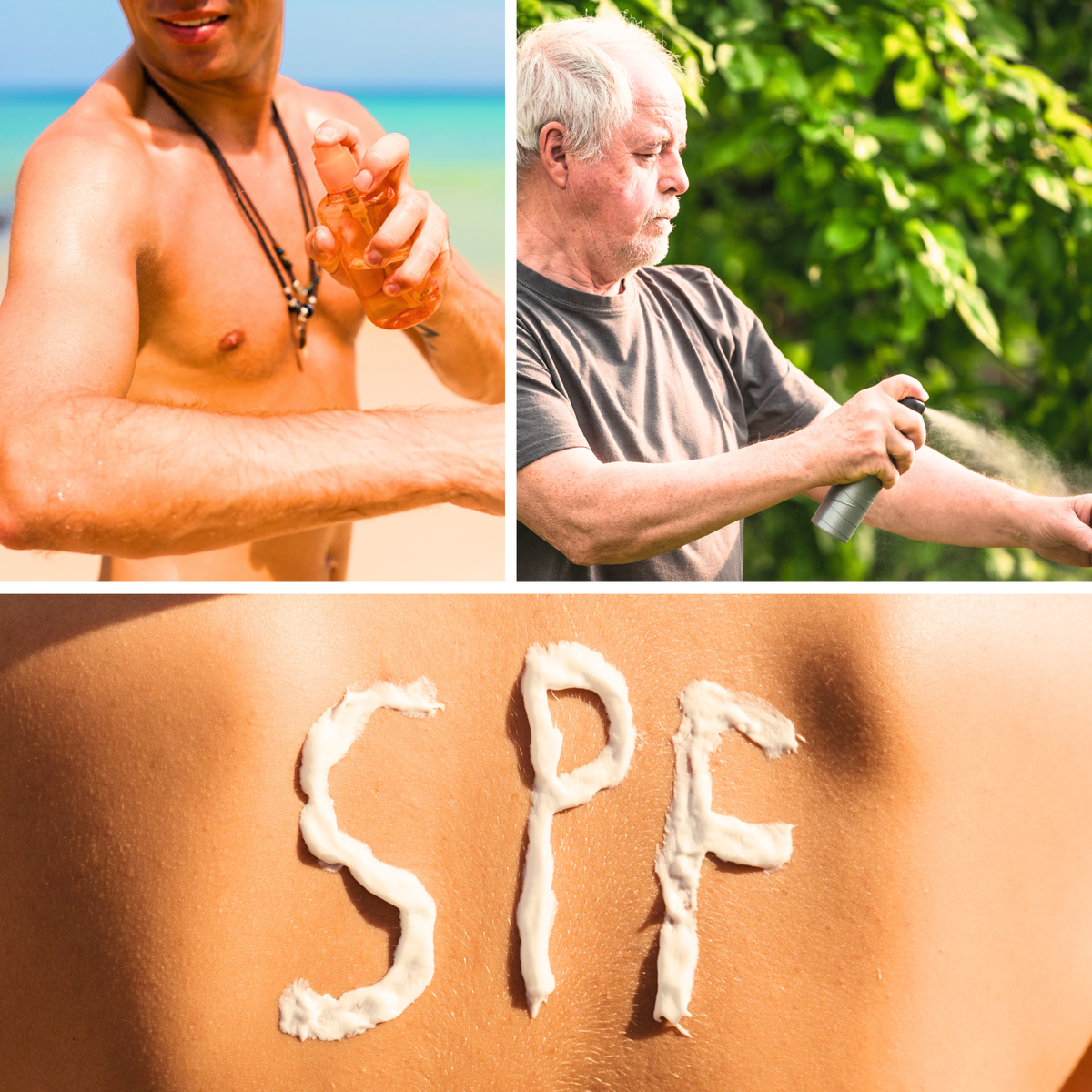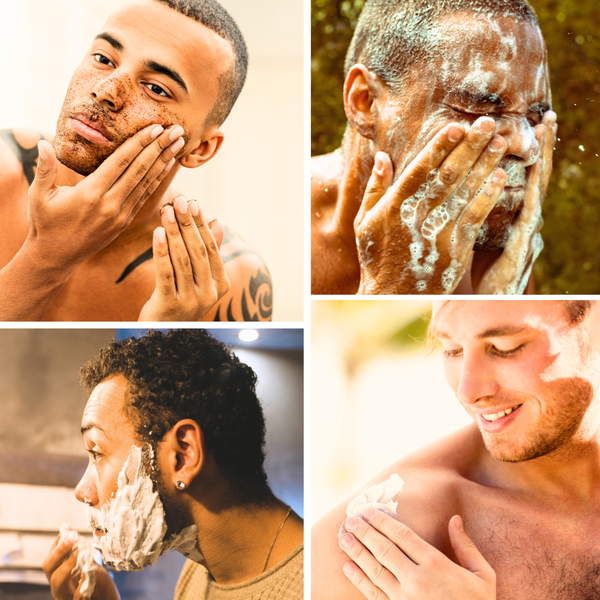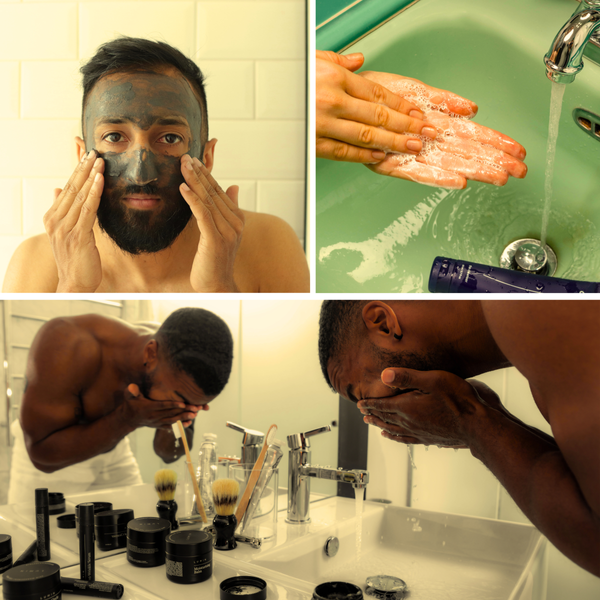When it comes to protecting your skin from the sun's harmful rays, choosing the right sun protection product is crucial. With a plethora of options available, it's essential to understand what's the difference between sunblock and sunscreen. This informative article will delve into the specifics of both, helping you make an informed decision for your skin type and lifestyle.
Key Takeaways:
- Sunblock acts as a physical barrier reflecting UV light, while sunscreen absorbs UV radiation and dissipates it as heat.
- Sunscreen and sunblock offer different types of active ingredients, with sunblock typically containing either zinc oxide or titanium dioxide.
- Choosing the right sun protection factor (SPF) and ensuring broad spectrum protection is key to effective sun safety.
What is Sunblock?
Sunblock, often referred to as physical sunscreen, contains active ingredients like zinc oxide and titanium dioxide. These minerals sit on top of the skin, forming a physical barrier that reflects and scatters the sun's ultraviolet (UV) light. Sunblock is effective immediately upon application and is a favorite for those with sensitive skin due to its minimal risk of skin irritation.
Sunblock acts as a shield, preventing the sun's harmful UV rays from penetrating the deeper layers of the skin. This is particularly beneficial for individuals prone to sunburn or those with a higher risk of developing skin cancer. The Skin Cancer Foundation recommends physical sunscreens for those seeking a strong defense against UV exposure.
Sunscreen Explained
Sunscreen, also known as chemical sunscreen, works through a different mechanism. It contains chemical ingredients that absorb UV radiation, converting it into heat, which is then released from the skin. Chemical sunscreens are typically more lightweight and less visible on the skin compared to sunblock.
The active ingredients in sunscreen include compounds such as avobenzone, octisalate, and oxybenzone, which provide protection against both UVA and UVB rays. It's important to apply sunscreen at least 15 to 30 minutes before sun exposure to allow the chemical defense to activate fully.
SPF and Broad Spectrum Protection
The sun protection factor (SPF) is a measure of how well a sun protection product can protect the skin from UVB rays, the type of radiation that causes sunburn and contributes to skin cancer. Both sunscreen and sunblock come in various SPF levels, and it's crucial to choose a product with at least SPF 30 for adequate protection.
Broad spectrum protection refers to a product's ability to shield the skin from both UVA and UVB rays. UVA rays are responsible for premature aging and can penetrate the skin more deeply, while UVB rays are the primary cause of sunburn. Broad spectrum sunscreen or sunblock ensures comprehensive protection against the full range of the sun's harmful rays. The Role of Mineral Ingredients in Sun Protection When discussing sunblock provide protection, it's essential to highlight the role of mineral ingredients such as zinc oxide and titanium oxide. These minerals act as physical barriers, reflecting the sun's harmful UV rays away from the skin. Unlike chemical sunscreens, which absorb UV radiation, mineral sunscreens sit on top of the skin and scatter sunlight. This makes them a preferred choice for those with sensitive skin or for parents seeking gentle options for their children. Mineral sunscreens are often referred to as physical blockers and are a core component of what many consider sunblock.
Moreover, mineral ingredients are less likely to cause skin irritation, making them suitable for all skin types, including those prone to acne or rosacea. They start working immediately upon application, unlike chemical sunscreens that may require about 20 minutes to become effective. The immediate protection offered by mineral ingredients is particularly beneficial for those who spend a lot of time outdoors and need quick coverage. As the dermatology association often suggests, for comprehensive UV protection, it's advisable to choose products that contain a mix of these minerals.
Sun Protection and Anti-Aging Benefits One of the lesser-discussed benefits of sun protection is its role in preventing skin aging. Exposure to the sun's ultraviolet rays can accelerate the aging process, leading to premature wrinkles and age spots. By using a broad-spectrum sunscreen that shields against both UVA and UVB rays, you can significantly reduce the impact of the sun's harmful rays on the skin's elasticity and appearance. This is why cosmetic dermatology emphasizes the use of sun protection as part of a daily skincare routine.
In addition to preventing skin aging, sunscreens that contain antioxidants can offer extra skin health benefits. These formulations help to neutralize free radicals, which are unstable molecules that can damage cells and contribute to aging and diseases. By choosing a sunscreen that combines UV filters with antioxidants, you're not only protecting your skin from the immediate effects of the sun's UV rays but also contributing to its long-term health and youthfulness. A board-certified dermatologist can recommend products that align with these anti-aging goals, ensuring that you're using only high-quality sources for your skin care.
The Role of Antioxidants in Sun Protection
When discussing how to shield ourselves from the sun's harmful UV rays, the conversation often revolves around SPF and the physical barriers created by sunblock and sunscreen. However, there's another hero in this narrative: antioxidants. These powerful molecules work by neutralizing free radicals, which are unstable atoms that can damage cells, leading to premature aging and skin cancer. Products infused with antioxidants such as Vitamin C, Vitamin E, or green tea extract offer an additional layer of protection against the sun's ultraviolet radiation. They help to mitigate the damage caused by exposure to the sun's rays, complementing the protective effects of traditional sunblock and sunscreen.
Incorporating antioxidants into your sun protection routine can be as simple as applying a serum or moisturizer with these ingredients before your sunblock or sunscreen. It's important to note that while antioxidants provide significant benefits, they do not replace the need for sunblock or sunscreen. Instead, they work in harmony to enhance your skin's defense. For the best results, seek shade during peak sun hours and use only high-quality sources of antioxidants recommended by a board-certified dermatologist. This multi-pronged approach ensures that your skin is not only shielded from the sun's harmful rays but also receives care that helps maintain its health and vitality.
Understanding Sun Protection Ingredients
When selecting a sun protection product, the list of ingredients can be both informative and overwhelming. Two components that often cause confusion are zinc oxide and para-aminobenzoic acid (PABA). Zinc oxide, a mineral-based compound, is a key ingredient in many sunblock formulations. It sits on top of the skin, reflecting and scattering the sun's UV rays. This physical barrier is effective immediately upon application, providing protection against both UVA and UVB rays. It's also considered safe for sensitive skin, making it a popular choice for those with skin irritations or allergies.
On the other hand, para-aminobenzoic acid, once a common ingredient in sunscreen products, has fallen out of favor due to its potential to cause skin irritation and allergies. While PABA effectively absorbs UVB radiation, its side effects have led many manufacturers to produce "PABA-free" sunscreens. Today's sunscreen works by combining various chemical filters that absorb the sun's harmful rays, converting them into heat, and releasing them from the skin. When choosing between sunscreen vs. sunblock, it's essential to understand these ingredients and how they interact with your skin. Always opt for products that suit your skin type and offer broad-spectrum protection to ensure you're fully protected from the sun's harmful effects.
Water Resistance and Sun Safety
When engaging in activities that involve water or sweat, it's important to choose a sun protection product that is water resistant. Water-resistant sunscreen and sunblock maintain their SPF level after a certain amount of time in water, usually 40 or 80 minutes. However, it's essential to reapply after swimming, sweating, or towel drying to maintain protection.
In addition to using sunscreen or sunblock, sun safety includes wearing protective clothing, seeking shade during peak UV hours, and avoiding tanning beds. These measures, combined with the right sun protection product, can significantly reduce the risk of sun damage and skin cancer.
Sunblock for Sensitive Skin
Individuals with sensitive skin often prefer sunblock due to its minimal risk of skin irritation. Physical sunscreens are less likely to cause allergic reactions because they do not contain many of the chemical ingredients found in sunscreens. Additionally, sunblock provides protection as soon as it's applied, making it a convenient option for those with reactive skin.
Despite its benefits, sunblock can sometimes leave a white residue or cast on the skin due to the presence of minerals like zinc oxide and titanium dioxide. However, many modern formulations are designed to minimize this effect, making sunblock a viable option for all skin tones.
Sunscreen for Daily Use
For those looking for a sun protection product that can be easily incorporated into their daily skincare routine, sunscreen is often the preferred choice. Chemical sunscreens are typically more cosmetically elegant, blending seamlessly into the skin without leaving a white cast. They are also available in a variety of formulations, including lotions, gels, and sprays, catering to different preferences and skin types.
Chemical sunscreen ingredients have evolved to offer more photostable and skin-friendly options. However, individuals with skin conditions or sensitivities should carefully review the ingredients to avoid potential skin irritation or allergic reactions.
Choosing the Best Sun Protection
Selecting the best sun protection depends on several factors, including skin type, lifestyle, and personal preference. A board-certified dermatologist can provide guidance on the most suitable products for your skin's needs. Whether you opt for sunscreen or sunblock, ensure that it offers broad spectrum protection, has a suitable SPF, and is water resistant if necessary.
For those with a history of skin cancer or at high risk of developing skin cancer, a high SPF sunblock may be the best choice. Conversely, individuals seeking a sun protection product for everyday cosmetic use may prefer a broad spectrum sunscreen with a lighter texture.
Summary
Understanding the difference between sunblock and sunscreen is key to choosing the right sun protection for your skin. Sunblock reflects UV light with physical ingredients like zinc oxide and titanium dioxide, while sunscreen absorbs UV radiation with chemical compounds. Both offer broad spectrum protection, but they differ in texture, application, and suitability for sensitive skin. Always look for a product with an appropriate SPF, broad spectrum coverage, and water resistance for the best defense against the sun's harmful rays.
FAQ Section
Q: Can I use both sunscreen and sunblock together?
A: Yes, you can use both sunscreen and sunblock together for added protection. Apply the sunscreen first, allow it to absorb, and then layer the sunblock on top.
Q: How often should I reapply sunscreen or sunblock?
A: You should reapply sunscreen or sunblock every two hours, or more frequently if swimming, sweating, or towel drying. Always follow the product's specific instructions for reapplication.
Q: Is a higher SPF always better?
A: While higher SPF offers more protection, SPF 30 is generally sufficient for most people when applied correctly. Higher SPFs may be beneficial for those with fair skin, a history of skin cancer, or prolonged sun exposure.









